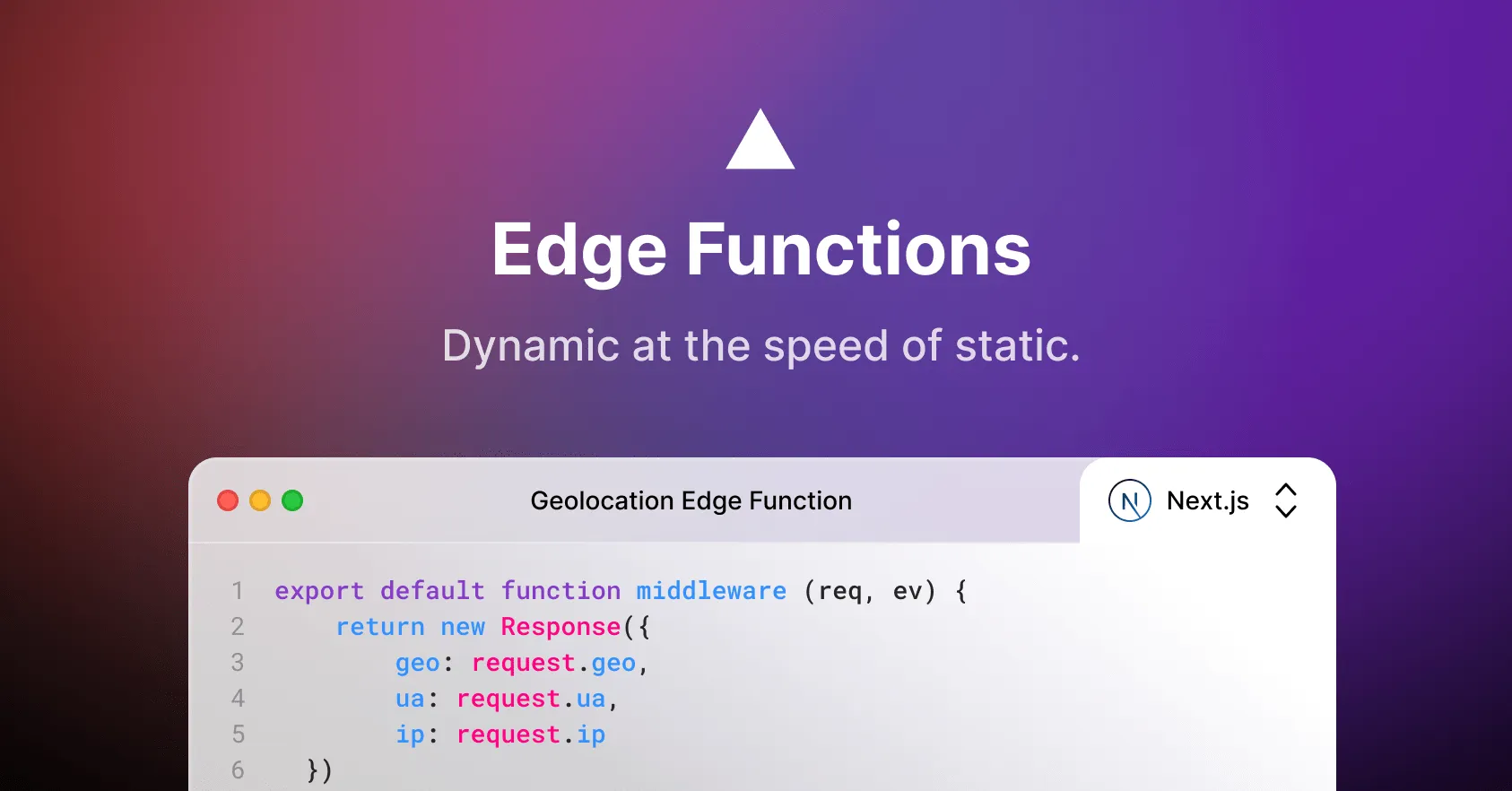How Edge Functions in Next.js Are Changing the Game
Shubham Prakash

Introduction
In the ever-evolving world of web development, speed and user experience are paramount. Traditional server-side processing often struggles to meet the growing demand for low-latency and high-performing applications. Enter Edge Functions in Next.js —a revolutionary feature that brings computation closer to the user, unlocking new levels of performance, scalability, and flexibility. This blog delves into how Edge Functions in Next.js are changing the game for modern web development.
What Are Edge Functions?
Edge Functions allow developers to run server-side code at the edge of the network, closer to the user's physical location. Instead of relying solely on centralized servers, these functions execute on distributed edge locations, reducing latency and improving response times. They are ideal for tasks like personalization, real-time data processing, and efficient API handling.
Next.js integrates Edge Functions seamlessly, enabling developers to deploy lightweight server-side logic globally with minimal configuration.
Why Edge Functions Are a Game-Changer
1. Reduced Latency
With computation occurring closer to the user, Edge Functions drastically reduce latency. This ensures faster load times and a smoother experience, especially for global applications where users access content from diverse geographical locations.
2. Dynamic Personalization at Scale
Edge Functions make it easy to deliver highly personalized content, such as user-specific recommendations or localized experiences. By processing requests near the user, these functions ensure real-time customization without impacting performance.
3. Enhanced Performance for Static Sites
Even static sites can benefit from Edge Functions. They enable on-the-fly updates to static content, such as adding user-specific data or modifying headers, without requiring a full rebuild or complex backend integration.
4. Optimized API Requests
Edge Functions act as middleware, optimizing API calls by pre-fetching or transforming data before it reaches the client. This not only reduces the load on the client-side application but also improves overall efficiency.
5. Cost Efficiency
By distributing the workload across edge locations, businesses can reduce dependency on centralized servers, leading to lower hosting and bandwidth costs. Edge Functions efficiently handle spikes in traffic, ensuring scalability without significant expense.
How Edge Functions Work in Next.js
In Next.js, Edge Functions can be defined within the pages/ or app/ directory using the middleware API or custom routes. They leverage Vercel’s globally distributed edge network, ensuring seamless deployment and high availability.
Key Features:
- Middleware API: Customize request handling with ease.
- Incremental Static Regeneration (ISR): Combine static site benefits with dynamic edge updates.
- Real-time A/B Testing: Serve different versions of your application to users dynamically for testing and analysis.
Use Cases for Edge Functions
1. Real-Time Personalization
Deliver tailored content based on user location, device, or preferences in milliseconds.
2. Geo-Fencing
Restrict or tailor access to your application based on the user’s geographical location, ensuring compliance with local regulations.
3. Improved SEO and Analytics
Customize metadata or headers dynamically to improve SEO and gather granular analytics without impacting load times.
4. Authentication and Security
Process authentication logic directly at the edge, reducing load on the backend and improving response times for sensitive operations.
5. Microservices Integration
Aggregate and process data from multiple APIs or microservices before delivering it to the client, ensuring a seamless and efficient user experience.
Advantages Over Traditional Architectures
Edge Functions stand out compared to traditional server-side architectures due to:
- Proximity to the User: Faster response times and better performance.
- Global Scalability: Automatically scale across regions without additional infrastructure.
- Flexibility: Integrate seamlessly with serverless architectures and modern cloud-native applications.
Conclusion
Edge Functions in Next.js are reshaping the way web applications are built and delivered. By bringing computation closer to users, they address the growing need for speed, scalability, and dynamic experiences in a globalized digital landscape. Whether you’re optimizing API calls, enhancing personalization, or delivering secure and efficient applications, Edge Functions offer a powerful solution.
For businesses aiming to stay ahead in the competitive web space, adopting Next.js and leveraging Edge Functions isn’t just an option—it’s a necessity. Explore this transformative feature today and elevate your application’s performance to the next level!



